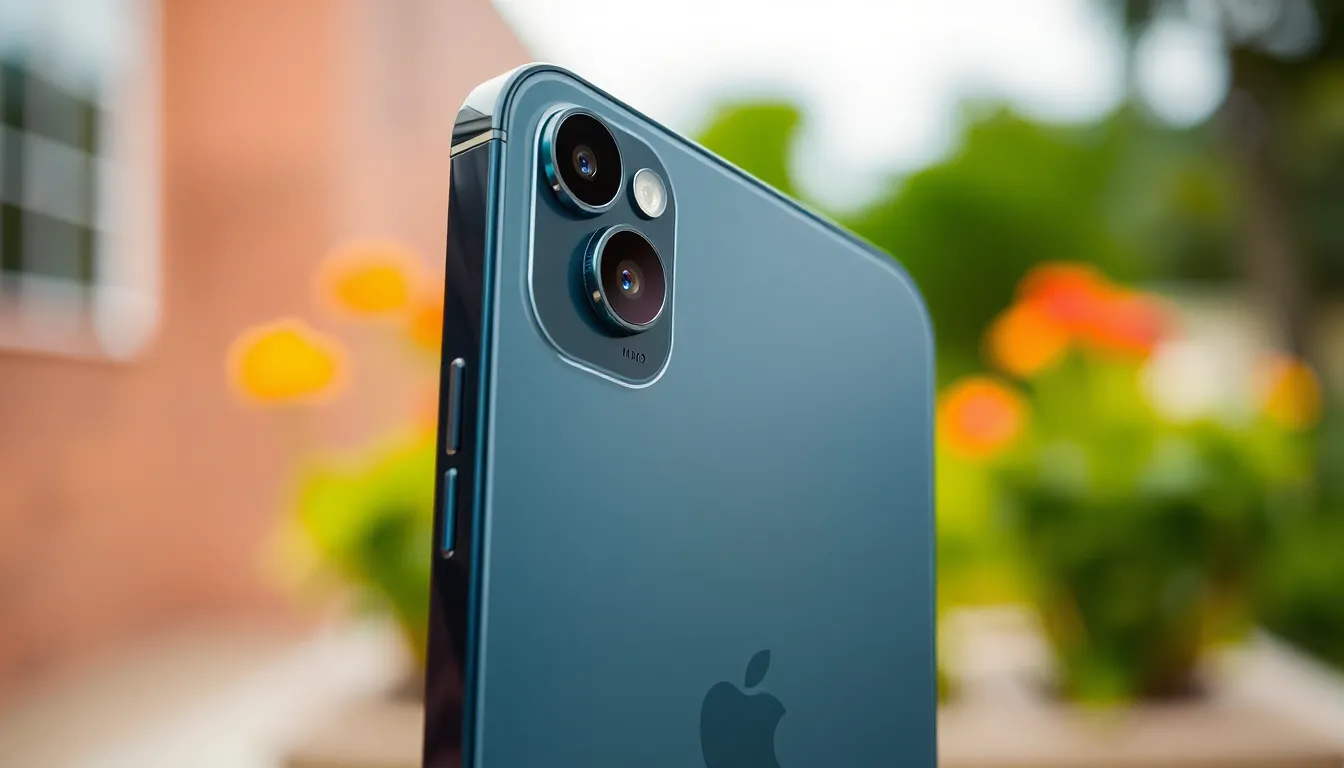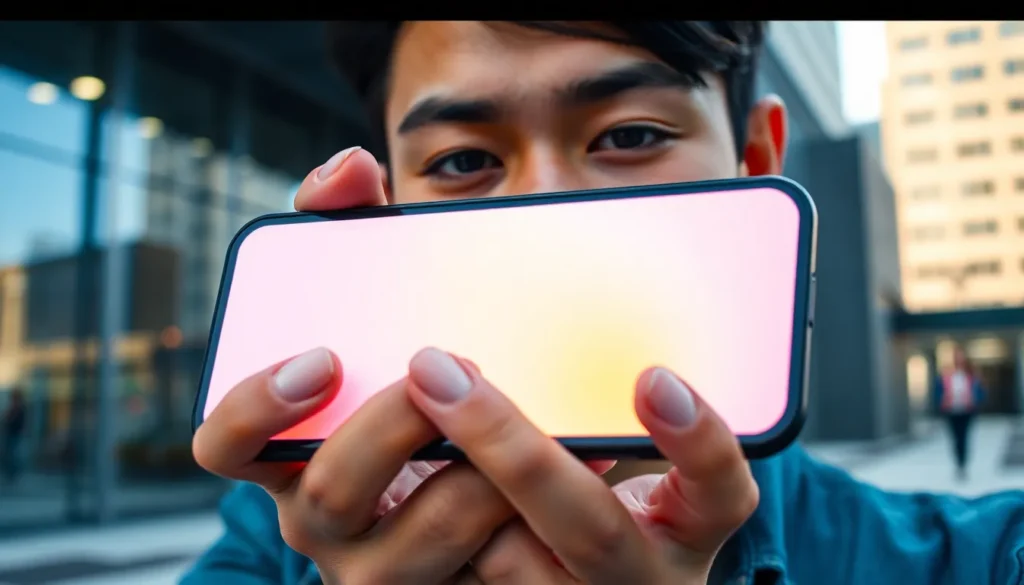Table of Contents
ToggleIn a world where smartphones seem to have more features than a Swiss Army knife, the iPhone 11 stands out with its sleek design and impressive capabilities. But wait—does it have an eSIM? This little gem of technology is like the secret sauce in your favorite burger, elevating your phone experience to a whole new level.
Overview of eSIM Technology
eSIM technology revolutionizes how users connect to mobile networks. This embedded SIM allows for greater flexibility and convenience in managing mobile services.
What Is eSIM?
eSIM stands for embedded SIM. Unlike traditional SIM cards, eSIMs are built directly into devices. Users can activate cellular plans without needing a physical card. Manufacturers design eSIMs to be programmable, making it easier to switch carriers or plans. Many phones, including the iPhone 11, incorporate this technology for enhanced user experience.
Benefits of eSIM
eSIM offers several advantages over traditional SIM cards. Users often enjoy the ease of switching networks without needing a physical card. It provides more space within devices, freeing up room for additional features. Convenience also increases since users can manage multiple plans on a single device. Security improves, as eSIMs reduce the risk of card loss or theft. Moreover, activation can occur remotely, streamlining the process for users.
iPhone 11 Specifications

The iPhone 11 offers a range of impressive specifications that enhance its usability and performance.
Supported Networks
Apple’s iPhone 11 supports a wide variety of networks. Users can connect seamlessly to both GSM and CDMA networks. Compatibility includes major carriers like AT&T, T-Mobile, Verizon, and Sprint in the United States. Utilizing eSIM technology, the iPhone 11 allows users to choose multiple cellular plans, facilitating easy switching. This flexibility provides greater choice without the hassle of swapping physical SIM cards. Dual SIM functionality makes it convenient for frequent travelers or those who manage personal and work numbers.
Hardware Capabilities
The hardware of the iPhone 11 is designed for exceptional performance. It features the A13 Bionic chip, which delivers impressive speed and efficiency. The device includes a 6.1-inch Liquid Retina display, ensuring vibrant colors and sharp details. With water and dust resistance rated at IP68, it withstands everyday challenges. Camera capabilities stand out, offering dual 12MP lenses for wide and ultra-wide shots, along with Night Mode for low-light photography. Enhanced battery life supports daily usage, ensuring users stay connected. Overall, the combination of advanced hardware makes the iPhone 11 a reliable choice.
Does iPhone 11 Have eSIM?
Yes, the iPhone 11 supports eSIM technology, enhancing its functionality. Users can easily activate cellular plans without needing a physical SIM card, which provides greater flexibility.
Available Features
eSIM on the iPhone 11 allows for convenient management of multiple cellular plans. Users can switch between different numbers seamlessly. Remote activation of plans offers additional convenience, especially for frequent travelers. The technology fits well into the iPhone 11’s design, which combines advanced functionality with user-friendly features. Notably, eSIM contributes to a cleaner internals layout, maximizing device space. It also enhances security, reducing the risk of losing a physical SIM card.
Compatibility with Carriers
iPhone 11’s eSIM capability works with major carriers including AT&T, T-Mobile, Verizon, and Sprint. Users enjoy flexibility in selecting cellular plans that best suit their needs. Each carrier supports eSIM activation, making it easier to manage personal and work numbers. Compatibility extends beyond the United States, as international carriers also support eSIM technology. This versatility enhances how users connect, particularly for those who travel frequently. Users can enjoy uninterrupted service while switching between networks as necessary.
User Experience With eSIM on iPhone 11
Users appreciate the eSIM feature on the iPhone 11 for its convenience and flexibility. This technology allows activation of cellular plans without a physical SIM card. Users can manage multiple plans easily, which is ideal for those who travel frequently or juggle personal and work numbers.
Setting Up eSIM
Setting up eSIM on the iPhone 11 is straightforward. Users begin by navigating to the Settings app and selecting Cellular. Next, they tap on “Add Cellular Plan” and scan the QR code provided by their carrier. Users can also enter the details manually if needed. After the plan activates, it’s possible to label the plans and choose defaults for calls and data. This simple process enhances user experience, ensuring that even those unfamiliar with technology can adapt quickly.
Common Issues and Solutions
Some users face issues when setting up eSIM on the iPhone 11. A common problem includes receiving an invalid SIM error. Restarting the device or resetting network settings often resolves this issue. Users may also experience difficulty switching between plans, which can usually be fixed by checking for carrier updates in the Settings app. Connectivity problems may arise, often tied to network settings that require adjustments. Addressing these common issues helps enhance overall satisfaction with eSIM functionality on the iPhone 11.
The iPhone 11 stands out not just for its impressive hardware but also for its eSIM capability. This feature enhances user experience by allowing easy management of multiple cellular plans without the need for a physical SIM card. With compatibility across major carriers and a straightforward setup process, users can enjoy seamless connectivity and flexibility.
While some may encounter minor issues, these are generally easy to resolve. Overall, the eSIM technology in the iPhone 11 significantly contributes to its appeal, making it a smart choice for those seeking convenience and advanced functionality in their smartphone experience.







